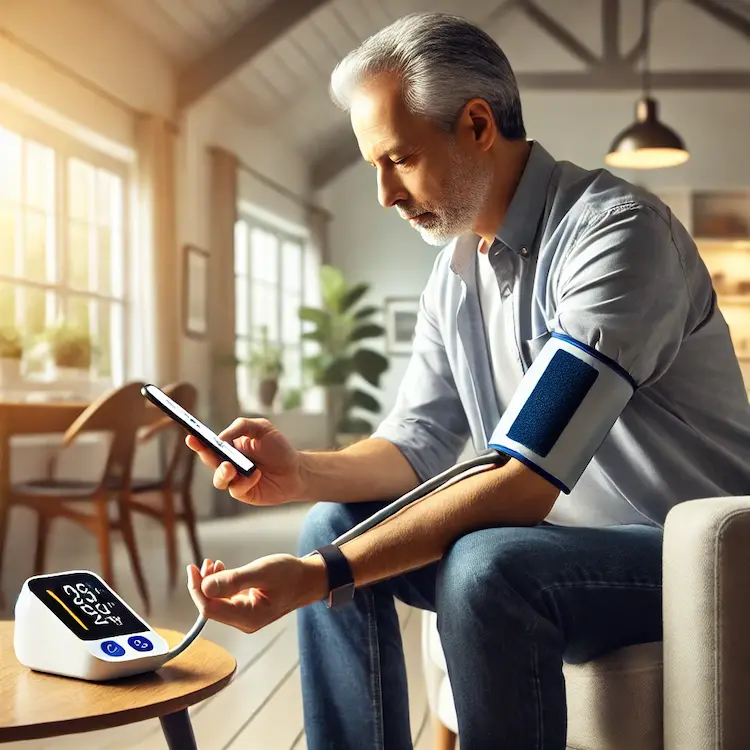Blood pressure management is a crucial aspect of maintaining cardiovascular health. For individuals diagnosed with hypertension, tracking their progress is essential to ensuring that prescribed medications are working effectively. This is where Sphyg, a trusted provider of clinically proven health monitoring devices, plays a significant role.
In this article, we will explore how Sphyg devices can aid in monitoring blood pressure, how medication effectiveness is tracked, and why consistent monitoring is vital for long-term health. Additionally, we’ll compare different tracking methods, discuss the societal impact of hypertension management, and provide practical advice for maintaining optimal blood pressure.
The Importance of Blood Pressure Monitoring
Blood pressure is a critical indicator of heart health. High blood pressure (hypertension) increases the risk of heart disease, stroke, and kidney failure. The World Health Organization (WHO) estimates that 1.28 billion adults worldwide suffer from hypertension, yet nearly 46% remain undiagnosed.
Effective blood pressure management requires:
- Accurate tracking of readings
- Understanding medication effectiveness
- Identifying trends over time
- Preventing severe complications
With proper monitoring tools like Sphyg’s devices, individuals can make informed decisions about their health and communicate effectively with healthcare providers.

How Sphyg Helps Monitor Blood Pressure Medication Effectiveness
Sphyg devices, including digital blood pressure monitors, offer clinically validated accuracy that helps users track their progress with medication. Here’s how they assist in effective monitoring:
Daily Readings for Medication Response
- When starting blood pressure medication, doctors recommend monitoring at the same time every day to observe changes.
- Sphyg monitors store historical data, allowing users to compare readings and identify trends.
Identifying Medication Adjustments
- Blood pressure medication requires adjustments based on effectiveness.
- If readings remain consistently high, the medication might not be working optimally.
- If readings drop too low, it might indicate overmedication, leading to dizziness or fatigue.
Detecting White Coat Syndrome vs. True Hypertension
- Many individuals experience white coat hypertension, where readings are high in a doctor’s office but normal at home.
- Sphyg home monitors provide real-world readings, ensuring an accurate diagnosis.
Managing Side Effects
- Some medications can cause fluctuations in blood pressure.
- By tracking trends, patients can report unusual changes to their healthcare provider for adjustments.
Comparison of Different Blood Pressure Tracking Methods
| Method |
Advantages |
Disadvantages |
| Manual Monitoring (Mercury Sphygmomanometer) |
High accuracy, used by professionals |
Requires training, not portable |
| Digital Home Monitors (Sphyg Devices) |
Easy to use, stores data, portable |
Slight variations in readings |
| Ambulatory Blood Pressure Monitoring (ABPM) |
Monitors over 24 hours, detects fluctuations |
Expensive, requires prescription |
| Doctor’s Office Check-ups |
Professional assessment, detects additional issues |
White coat syndrome may affect results |
Societal Impact of Effective Blood Pressure Tracking
Reduced Healthcare Burden
- Hypertension-related complications, such as stroke and heart disease, contribute to high hospitalization rates.
- Effective tracking reduces emergency medical visits and long-term healthcare costs.
Improved Patient Awareness
- Educated patients take proactive steps in managing their health.
- With real-time tracking from Sphyg monitors, individuals engage actively in their treatment.
Workplace Productivity
- Hypertension-related conditions cause fatigue, dizziness, and reduced efficiency.
- Stable blood pressure levels enhance productivity and overall well-being.
Practical Advice for Monitoring Blood Pressure Medication Progress
Choose the Right Blood Pressure Monitor
- Opt for an upper-arm digital monitor for accuracy.
- Ensure the cuff size fits properly (Sphyg offers multiple cuff sizes).
Follow a Consistent Routine
- Measure blood pressure at the same time each day (morning and evening recommended).
- Sit upright with feet flat on the ground for accurate readings.
Maintain a Blood Pressure Log
- Keep a written or digital log of readings.
- Include details like time, medication intake, and any symptoms.
Identify Triggers and Patterns
- Monitor how diet, exercise, and stress levels affect blood pressure.
- Reduce sodium intake and incorporate heart-healthy foods.
Consult Your Doctor Regularly
- Share trends from Sphyg devices with your doctor.
- Never adjust medication dosage without medical guidance.

Conclusion
Tracking blood pressure progress with tools like Sphyg monitors is essential for effective hypertension management. By consistently monitoring readings, understanding medication effectiveness, and making necessary lifestyle adjustments, individuals can significantly reduce their risk of heart disease and stroke. Using a reliable device, maintaining records, and working closely with healthcare providers ensures better long-term health outcomes.
Key Takeaways
- Blood pressure tracking is essential for medication effectiveness and long-term health.
- Sphyg digital monitors provide accurate, real-time data storage for trend analysis.
- Daily monitoring helps adjust medication and detect underlying issues.
- Proper tracking reduces healthcare costs and improves societal productivity.
- Adopting a healthy lifestyle enhances medication effectiveness.
Actionable Recommendations
Choose an accurate, easy-to-use monitor (Sphyg devices are highly recommended).
Measure blood pressure daily at the same time for consistency.
Track readings manually or digitally and share them with your doctor.
Identify dietary or lifestyle factors affecting blood pressure.
Seek medical consultation for any concerning trends or symptoms.

